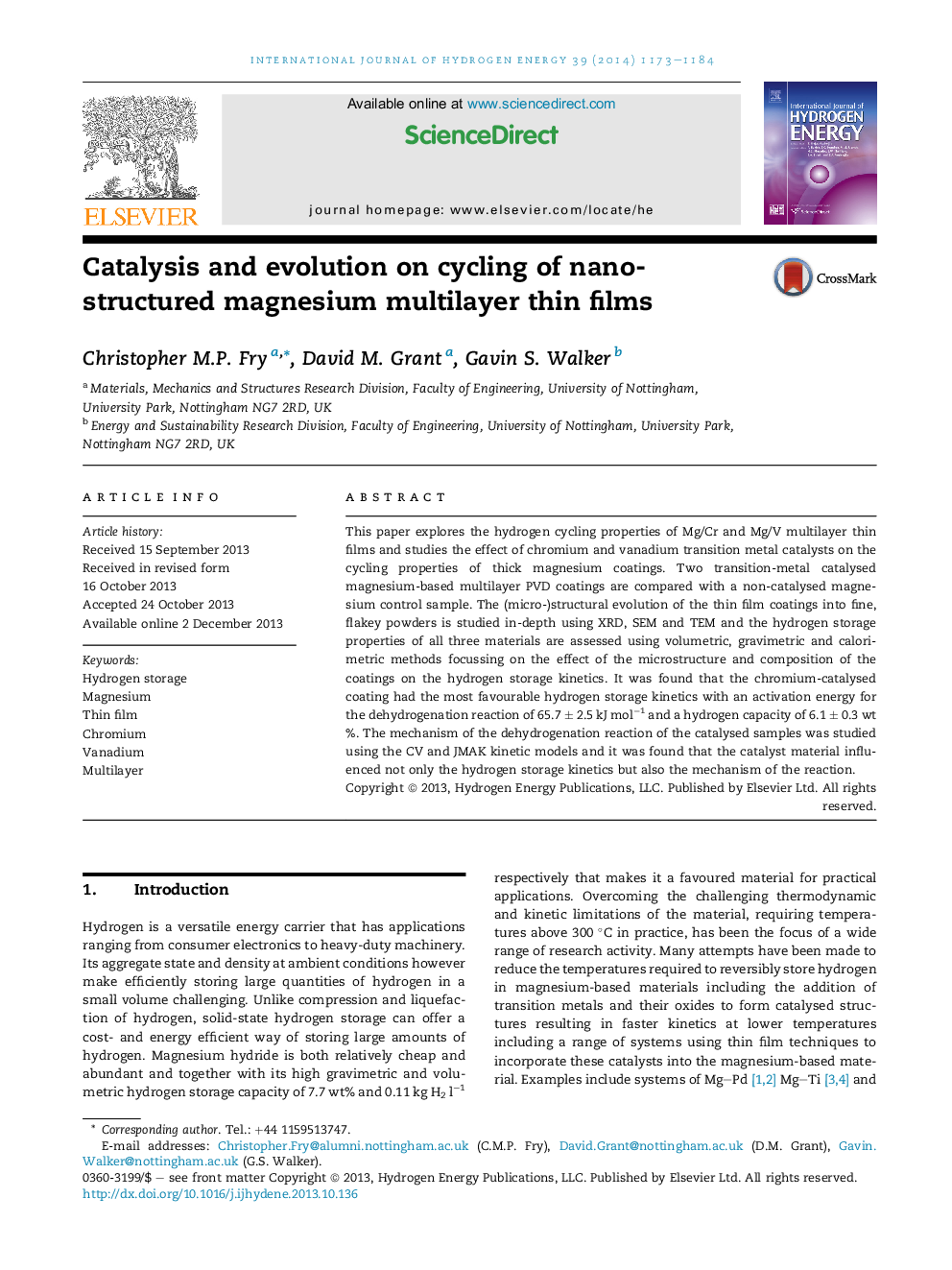| Article ID | Journal | Published Year | Pages | File Type |
|---|---|---|---|---|
| 1276564 | International Journal of Hydrogen Energy | 2014 | 12 Pages |
•Kinetic modelling of the dehydrogenation of catalysed magnesium multilayer thin films.•Low activation energy of the dehydrogenation reaction (65.7 kJ mol−1).•High cycling stability with retained nano-structure.•Cost-effective and abundant starting materials.•In-depth electron microscopy study.
This paper explores the hydrogen cycling properties of Mg/Cr and Mg/V multilayer thin films and studies the effect of chromium and vanadium transition metal catalysts on the cycling properties of thick magnesium coatings. Two transition-metal catalysed magnesium-based multilayer PVD coatings are compared with a non-catalysed magnesium control sample. The (micro-)structural evolution of the thin film coatings into fine, flakey powders is studied in-depth using XRD, SEM and TEM and the hydrogen storage properties of all three materials are assessed using volumetric, gravimetric and calorimetric methods focussing on the effect of the microstructure and composition of the coatings on the hydrogen storage kinetics. It was found that the chromium-catalysed coating had the most favourable hydrogen storage kinetics with an activation energy for the dehydrogenation reaction of 65.7 ± 2.5 kJ mol−1 and a hydrogen capacity of 6.1 ± 0.3 wt%. The mechanism of the dehydrogenation reaction of the catalysed samples was studied using the CV and JMAK kinetic models and it was found that the catalyst material influenced not only the hydrogen storage kinetics but also the mechanism of the reaction.
